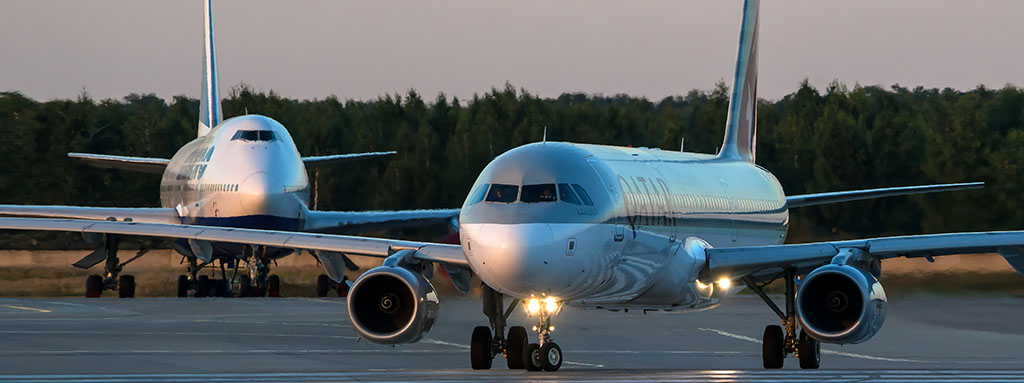Some of Europe’s busiest airports are already operating at full capacity. Unfortunately, airport congestion is a global trend. Furthermore, airport congestion is becoming one of the major bottlenecks to air transport growth. According to Eurocontrol, just in Europe alone, twenty airports will be at their maximum capacity by 2035.
Airlines drop connection-heavy routes in favor of routes with high point-to-point demand, which are more profitable.
I recently read an article(1) that summarizes a study about how airlines respond to airport congestion. One obvious finding of this study is that airport congestion stalls passenger growth and pushes potential passengers into flying to or through a different airport.
For example, let’s have a look at London-Heathrow. LHR capacity has reached a cap at around 480,000 aircraft movements per year. As a result, many airlines – and their passengers – are flying to somewhere else. “Missing” passengers travelling into the region are choosing non-congested nearby airports, such as Gatwick, Stansted or Luton. In the case of international transit passengers, they travel to their final destination through another intercontinental hub. Amsterdam, Frankfurt, Paris Charles-de-Gaulle and even Madrid are inevitably reaping the spoils of Heathrow’s inability to convince the region of the urgent need for expansion.
But one of the findings of the aforementioned study(1) that I found very interesting is that network connectivity decreases. According to this study, as the airport constraints increase, airlines tend to increase the frequency of flights on existing routes. For example, increasing the number of flights from Rome to Heathrow – rather than offer new destinations. In other words, congestion pushes airlines to offer more flights to fewer destinations. If you think about it, it makes sense: “airlines drop connection-heavy routes in favor of routes with high point-to-point demand, which are more profitable”.
This is a very interesting finding since it gives a business opportunity to unconstrained competitors. Nearby airports can provide the connectivity that the region is demanding but the congested airport cannot deliver. Hub competitors can also increase their offer to new destinations by capturing passengers that cannot fly through the congested airport. Airport competition is real and airport business developers will waste no time to exploit their competitor’s shortcomings and snatch some passengers from “abandoned” routes.
Decision makers in airport expansion should be aware of this. It is estimated that airports can generate between 2,000 to 4,000 jobs per million passengers. The same study(1) states that, with unconstrained capacity, LHR could be handling 15 more million passengers. You do the math.

(1) Gridlock on the ground: How airlines can respond to airport congestion. By Jaap Bouwer, Dominic Maxwell and Steve Saxon. Aug 2015


